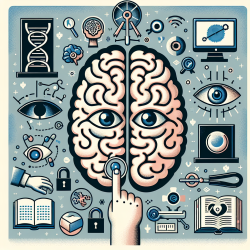Introduction
In the world of speech-language pathology, understanding the intricate connections between brain activity and cognition is pivotal for enhancing therapeutic outcomes. A recent study titled "Brain activity and cognition: a connection from thermodynamics and information theory" offers groundbreaking insights that can revolutionize our approach to therapy, especially in online settings such as those provided by TinyEYE.
The Science Behind the Connection
The research by Collell and Fauquet (2015) delves into the theoretical connections between thermodynamics and information theory, proposing a framework to link physical brain activity with cognitive models. This framework can significantly enhance our understanding of how brain processes relate to cognitive functions, which is crucial for developing effective therapeutic strategies.
Key Findings and Their Implications
- Thermodynamic Framework: The brain is modeled as a thermodynamic device that processes information. This approach provides a new perspective on how cognitive processes can be understood and manipulated.
- Information Theory: By modeling cognition in terms of information theory, practitioners can gain insights into the probabilistic nature of cognitive processes, which can be crucial for designing targeted interventions.
- Unified Models: The study highlights the potential for unifying thermodynamic and information-based models, offering a comprehensive view of brain activity and cognition.
Practical Applications for Practitioners
For practitioners, integrating these scientific insights into therapeutic practices can lead to more effective interventions. Here are some ways to apply these findings:
- Data-Driven Decisions: Use the principles of thermodynamics and information theory to make data-driven decisions in therapy planning and execution.
- Customized Interventions: Develop personalized therapy plans by understanding the unique cognitive and thermodynamic profiles of each child.
- Enhanced Online Therapy: Leverage the insights from this research to improve the efficacy of online therapy sessions, ensuring that interventions are both scientifically grounded and tailored to individual needs.
Encouraging Further Research
While the study provides a robust framework, it also opens the door for further research. Practitioners are encouraged to explore these connections in their work, contributing to a growing body of knowledge that can transform therapeutic practices.
Conclusion
By embracing the insights from this research, practitioners can enhance their skills and deliver better outcomes for children. The integration of thermodynamics and information theory into therapy not only enriches our understanding but also empowers us to create more effective and personalized interventions.
To read the original research paper, please follow this link: Brain activity and cognition: a connection from thermodynamics and information theory.










